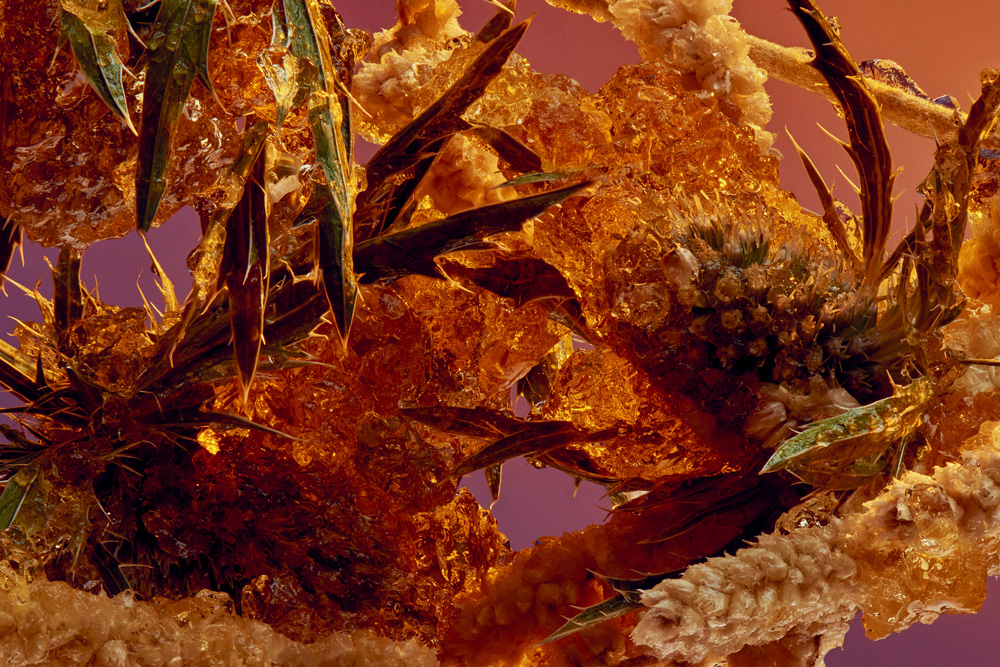2018-19
Other Biological Futures. Issue 4, Journal of Design & Science. Edited by Dr. Alexandra Daisy Ginsberg & Natsai Audrey Chieza in collaboration with MIT Media Lab and MIT Press.

Image from a series commissioned for "Other Biological Futures". Credit: Justinas Vilutis.
The Journal of Design and Science (JoDS), a joint venture of the MIT Media Lab and The MIT Press, forges new connections between science and design, breaking down the barriers between traditional academic disciplines in the process. Targeting readers with open, curious minds, JoDS explores timely, controversial topics in science, design, and society with a particular focus on the nuanced interactions among them. Alexandra Daisy Ginsberg is a member of the Editorial Board.
ABOUT THE ISSUE
Guest edited by Ginsberg, and designer Natsai Audrey Chieza, Issue 4 of JoDS, “Other Biological Futures” looks at biodesign, the design of, with, or from biology.
Biodesign is being promoted by scientists and designers as an ecological remedy, a technological challenge, an economic opportunity, and a manufacturing and industrial revolution. Over the last decade, Ginsberg and Chieza have both been exploring the design of living matter and its potential implications. As co-editors of Issue 4, they identify difficulties they see emerging in the evolving practice of biodesign, and open up new directions for investigation. Together they ask whether biodesign in practice really can make things better, and what that might look like. Initiating ten conversations between scientists, designers, curators, artists, bioengineers, activists, historians, and more, all who are somehow “other” to each other, the issue reveals complex issues in biodesign around the world.
The conversations are available to read online without a paywall. Instigating an open dialogue about different kinds of colonisation in biodesign, raising ethical issues on the design of living matter and, hopefully, reaching beyond established networks and cultures to encourage the imagination of “other biological futures”, this is a conversation readers are invited to expand upon.
Read the editorial here and explore the ten conversations here.

Image from a series commissioned for "Other Biological Futures". Credit: Justinas Vilutis.
“Adopting this more social rather than technological perspective on biodesign allows us to include within it a wide range of activities and people, from traditional to contemporary processes that use low-tech or high-tech methods, practiced by scientists to farmers in labs, factories, studios, and homes. Two questions unite their work: “Can biology do this better?” And, “How will using biology change things for the good?” This approach provokes thinking about what “good” biodesign might look like, and what other kinds of potential biological futures could exist, which we hope this issue begins to sketch out.”
"(...) For "Other Biological Futures", we explore these questions and seek out other imaginations for biodesign. “Other” is a social condition contingent on difference to a dominant cultural hegemony. Visions are limited by the lack of diverse viewpoints and expertise from those imagining these futures, to those implementing them. From the experience of women working in science, to geopolitical imperialism, as we ask how biodesign could proliferate, it becomes urgent to ask: who and what is other? Otherness is a rich space in which to include ideas from alternative geographies, economic frameworks, histories, knowledge systems, languages, religious beliefs, moral codes, ethnicities, genders, and non-human lifeforms. Other can mean an outside perspective, but it can also be relative. In our individual practices working with scientists, we regularly experiment outside of conventional art and design methods to explore the social dimensions of biotechnology, and we often operate as outsiders inside our own fields.
For this issue, we have initiated a series of conversations, published serially, between practitioners who are other to each other, in their views, their disciplines, or their cultures. We asked scientists, engineers, artists, writers, historians, designers, curators, and more, inside and outside of biodesign, to identify other possible biological futures, and to think together about who or what is missing from the discussion. How might their questions offer different ways to think about biodesign’s potential?"
– Excerpts from editorial by Dr. Daisy Alexandra Ginsberg and Natsai Audrey Chieza.
Image from a series commissioned for "Other Biological Futures". Credit: Justinas Vilutis.
Image from a series commissioned for "Other Biological Futures". Credit: Justinas Vilutis.